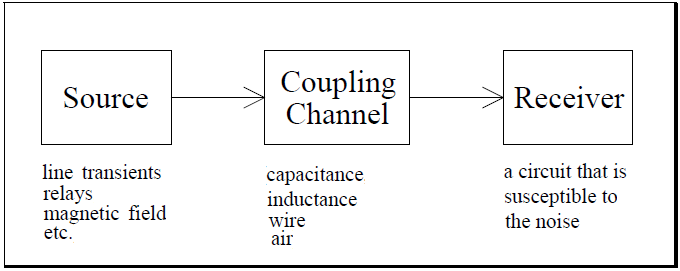.
Principles of EMC
Electromagnetic compatibility refers to the capability of two or more electrical devices to operate simultaneously without interference.
A system that is electromagnetically compatible therefore satisfies the following criteria :
1. It does not cause interference with other systems.
2. It is not susceptible to emissions from other systems.
3. It does not cause interference with itself.
Additionally the system must meet regulatory requirements.
The interference that EMC refers to is know as electromagnetic interference (EMI). A common name for EMI is “noise”.
Noise can be natural (e.g. lightning, solar disturbances) or human (e.g. relays, radio, radar) in origin.
Basic composition of the EMC problem
There are always three elements involved in a noise problem :
– A noise source
– A coupling medium
– A receiver
To solve a noise problem (make something electromagnetically compatible), one or more of these elements must be removed, reduced or diverted.
.
.
.
.
.
References
.
Links
http://www.planetanalog.com/ all signal, no noise
.
Contact Protection and Arc Suppression Methods for Mechanical Relays
http://www.industrologic.com/mechrela.htm
.
Qencharc
ARCING, SPARKING, and TRANSIENTS often cause premature failures in relays, switches, thyristors, triacs, contactors, and related products. Paktron QUENCHARCS¤ extend operating life when properly selected and applied.
Quencharc_QRL PDF File
.
.
.
.
.
.
